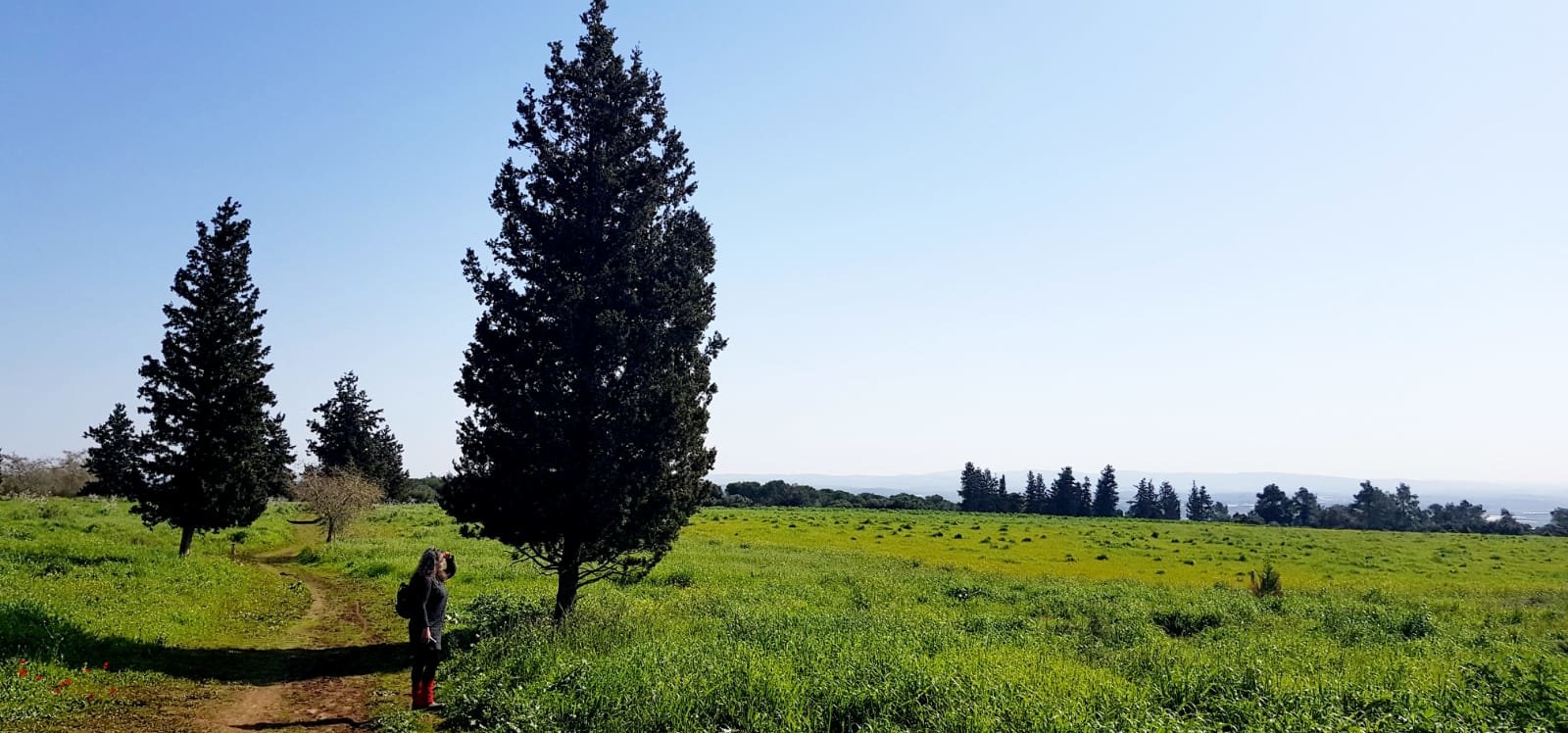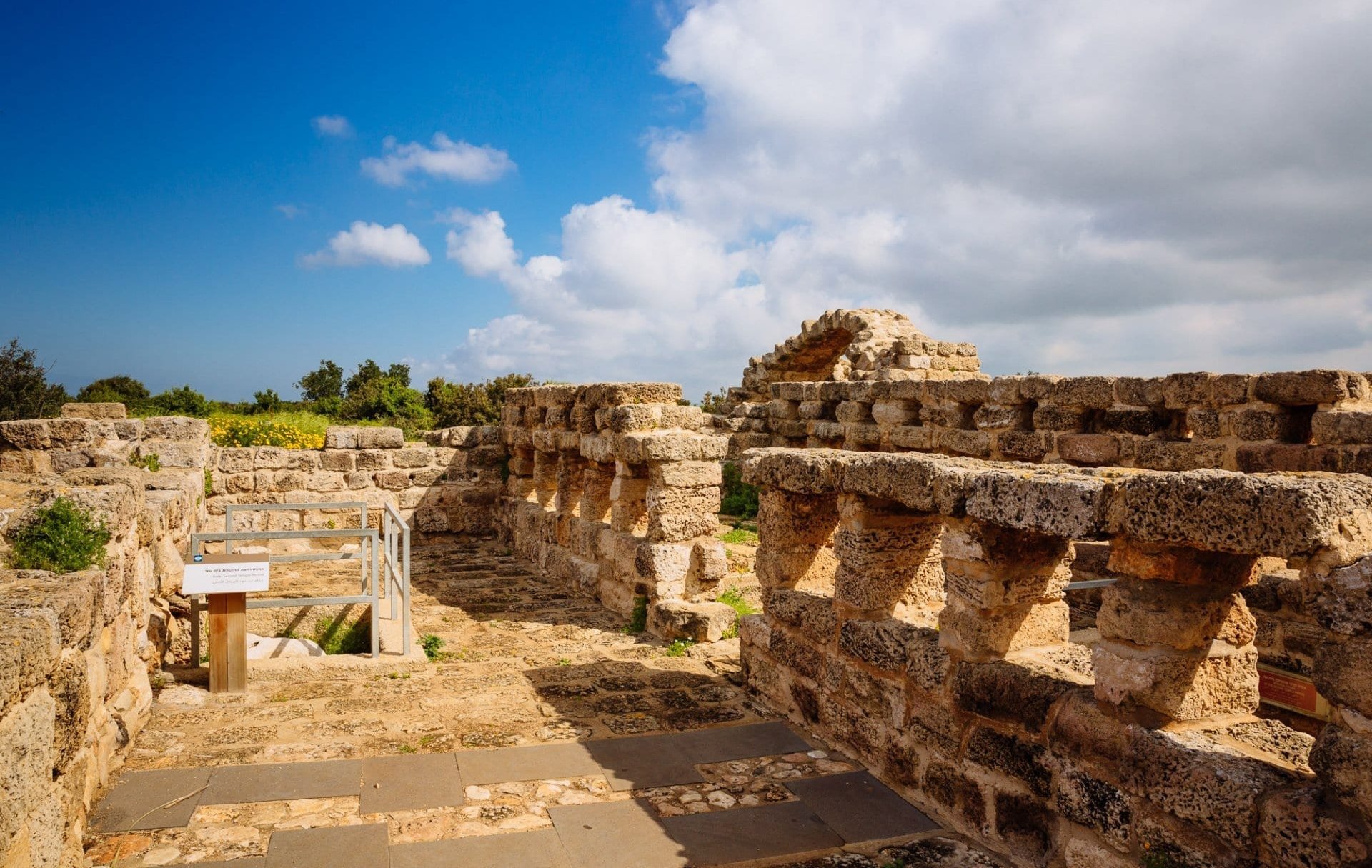We’ll encounter a yellow trail (a trail that connects different trails at Ramat Hanadiv) but we’ll continue with the red one. Since there is almost no shade along this trail, we’ll take the opportunity of resting a while at the quaint shady spot that we’ll encounter soon.
From here the markings lead to a narrow trail though an area with shrubby vegetation, and suddenly without warning we’ll discover the beginning of the Horvat Aqav compound, or in Arabic, Hirbet Mantzur al-Aqav.
Horvat Aqav: who wouldn’t want a manor here?
First we’ll see a stone wall with steps nearby. We’ll go up the stairs and walk along the central path. We’ve reached Horvat Aqav (point 3 on the map).
We’re now at the highest point of Ramat Hanadiv (141 metres above sea level) on the south-western cliff of Mt. Carmel, which overlooks a spectacular view of Samaria and HaNadiv Valley, but mainly the sea and the coastal plain. This is a location in which many would undoubtedly wish to live during any period of history… this location is the compound in which everything was discovered.
The archaeological excavations that began in 1984 revealed a large compound that was used as living quarters during three different periods: during the Second Temple Period (1st century CE) there was a large manor that belonged to a Jewish family.




















